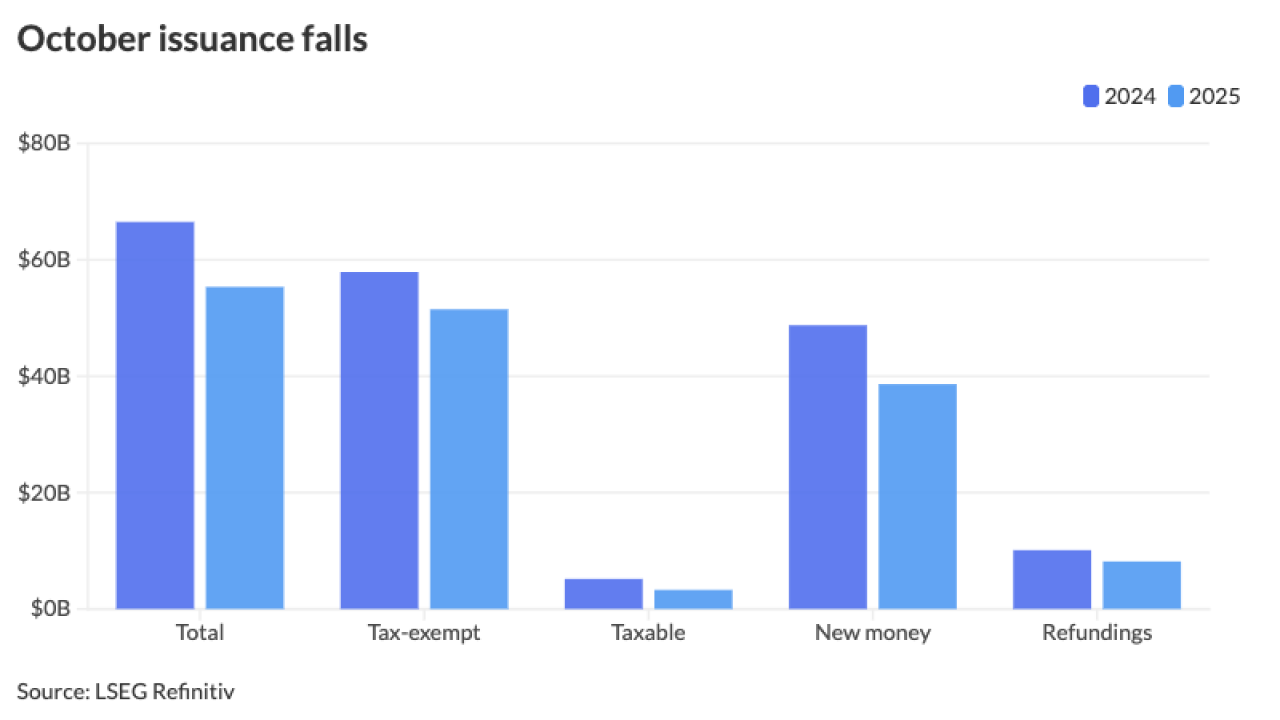
The National Association of Bond Lawyers is offering several suggestions and "friendly reminders" to the Internal Revenue Service, which currently does not have a permanent commissioner in place.
"NABL members appreciate that the IRS gives us an opportunity to play a role in their priority guidance process every year," said NABL president, M. Jason Akers of Foley & Judell LLP in New Orleans. "We think it is critical that regulators hear directly from the market on where additional guidance can be most helpful."
The guidance comes in the form of a
Serving as the IRS Commissioner has become a political hot seat as Treasury Secretary Scott Bessent and former Trump advisor Elon Musk clashed over who should run the agency.
The IRS is currently helmed by Michael Faulkender, the acting Commissioner since April. He was preceded by Gary Shapely who served for three days, Melanie Krause, and Doug O'Donnell.
Danny Werfel was the most recent non-acting commissioner and ran the agency for most of the Biden Administration.
NABL's suggestions include clarifying the definition of a private activity bond as laid out in the Treasury's Final Regulations. Per the letter, "The Final Regulations provide a workable framework, but there are still some areas that merit clarification."
"NABL has provided specific comments to the IRS and Treasury regarding these matters in a letter dated September 26, 2018, and we would be pleased to discuss our comments."
NABL would also like to weigh in on how the agency interprets Forms 8038 and 8038-G, which are required disclosures to establish and maintain the federal income tax-exemption. The G designation refers to "government."
Form 8038 is a known culprit for tax attorneys who are seeing a sudden uptick in
NABL has a different issue stating, "The current instructions for IRS Form 8038 and Form 8038-G include provisions that are ambiguous and inconsistent with each other and with other published guidance. These inconsistencies and ambiguities have resulted in differing interpretations and differing approaches to information reporting."
Two of the suggestions pertain to missing guidance on laws passed during the Biden Administration.
The Infrastructure Investment and Jobs Act, also known as the Bipartisan Infrastructure Law opened two new categories for exempt facility bonds for the financing of "qualified broadband projects" and "qualified carbon dioxide capture facilities."
According to NABL, "The statutory language raises questions regarding the ability to issue bonds to meet the stated requirements for each category. The tax-exempt bond community would benefit from guidance with respect to the implementation of these new exempt facility categories."
Bond financing for "eligible components" of the systems and the definition of "qualifies" are especially vexing.
Section 6417 of the tax code presents another point of confusion for tax attorneys trying to navigate the "haircut provision" that popped up in the Inflation Reduction Act.
According to NABL, the provision "mandates that tax credits be reduced by a fraction of the cost of the energy project financed with tax-exempt bonds to the total cost of the energy project but not reduced by more than 15%." The group is requesting guidance on allocation methodologies.





